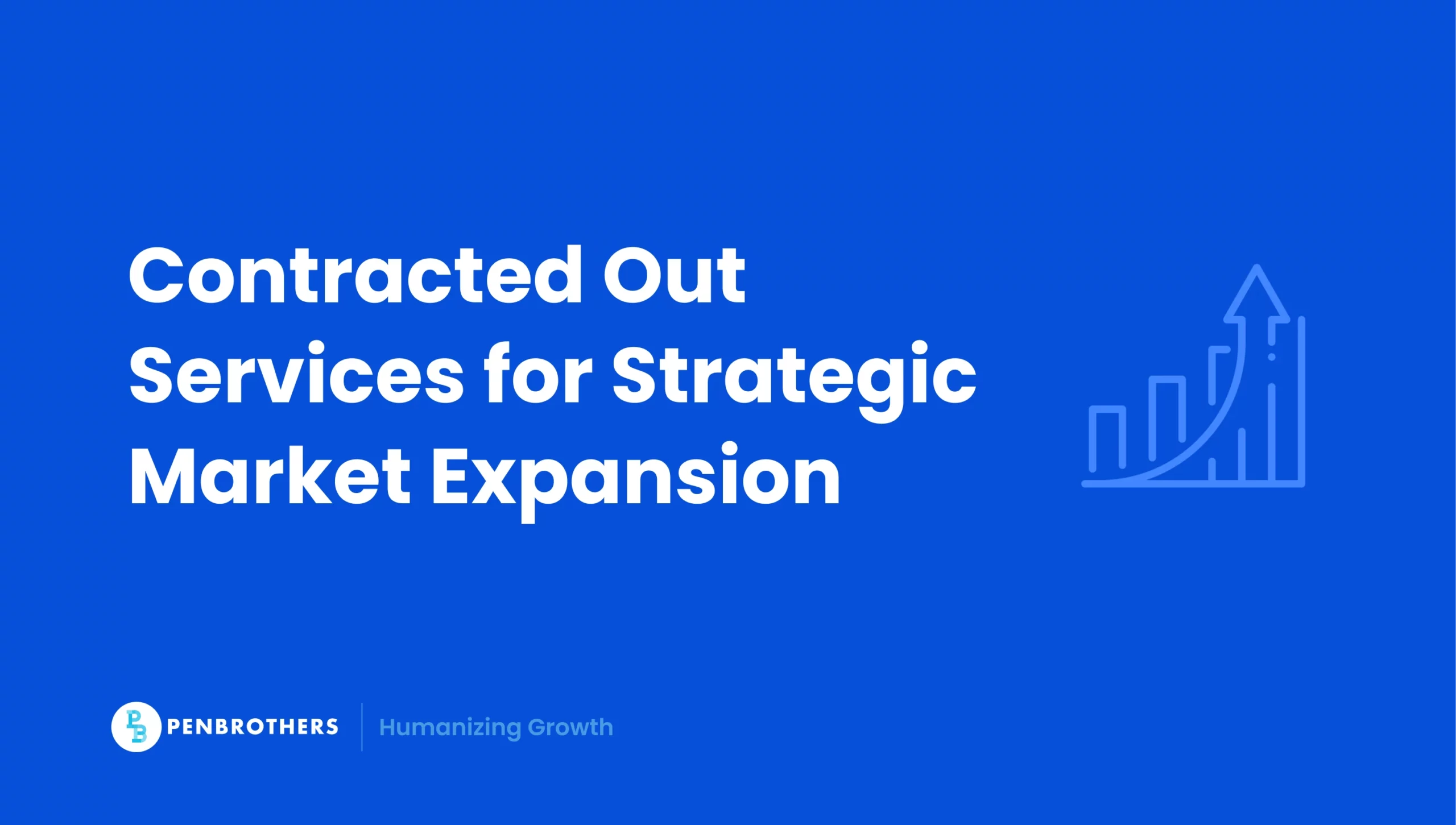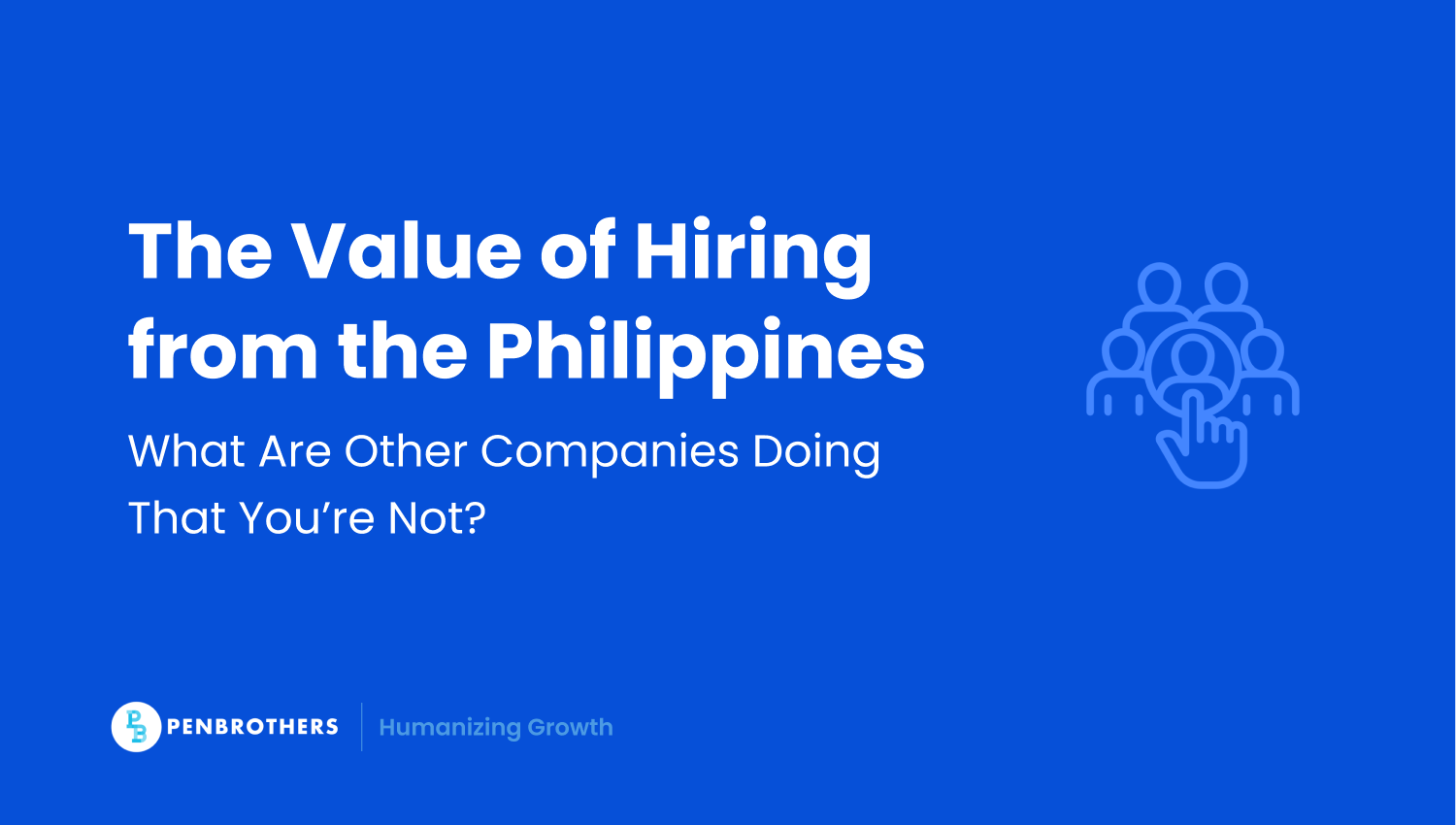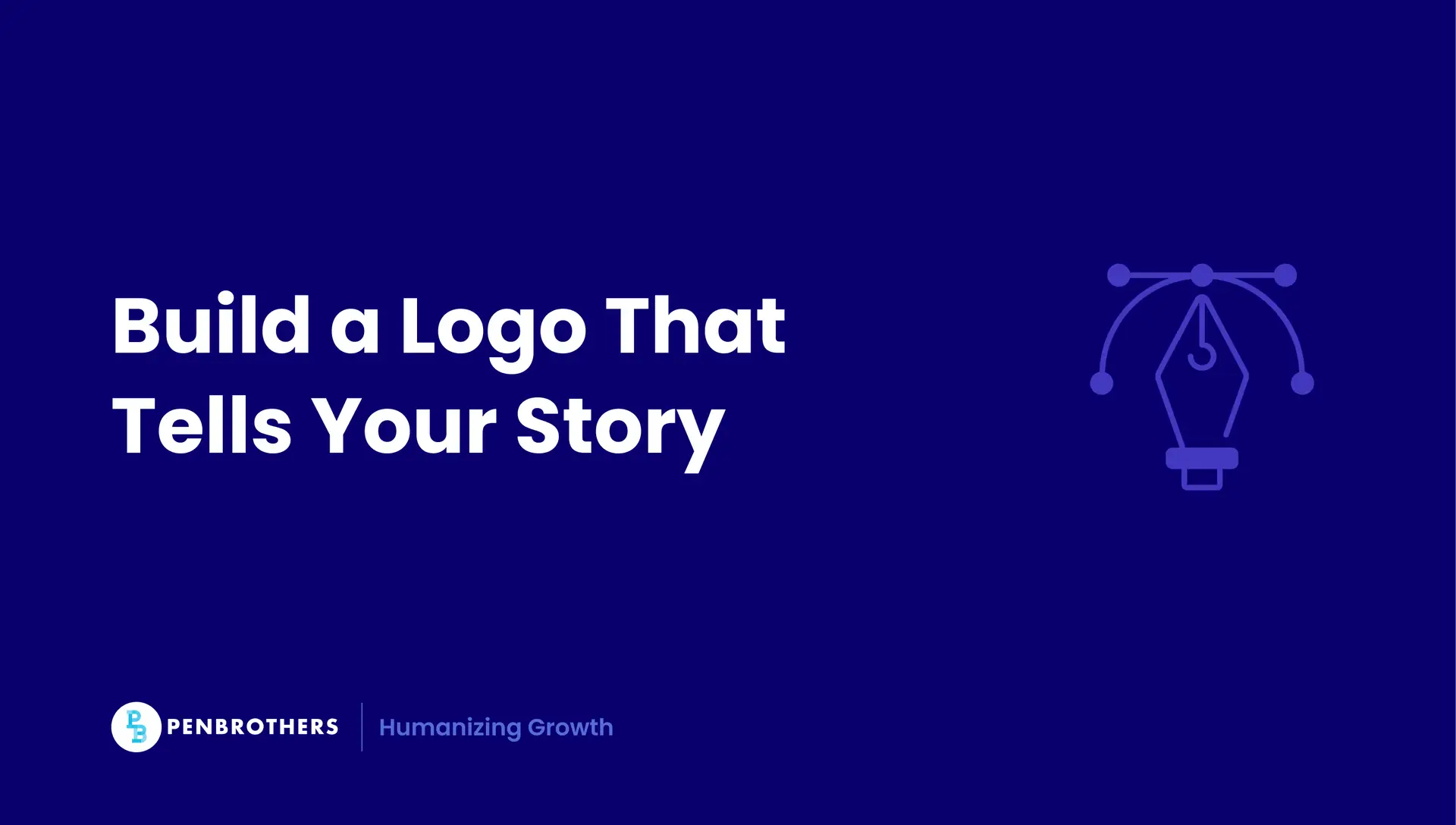What's Inside?
How Contracted Out Services Transform Market Expansion Strategies

The rules changed overnight.
What used to take eighteen months and two million dollars now happens in eight weeks with a strategic phone call. Contracted out services have become the secret weapon that transforms ambitious startups into global competitors while their more traditional rivals remain trapped in the hiring cycle that guarantees they’ll arrive to market opportunities six months too late.
The shift is profound. The opportunity is immediate. The competitive advantage belongs to those who recognize it.
Key Takeaways
- Strategic Shift from Cost-Cutting to Growth Acceleration: The primary purpose of using contracted out services has evolved. It is no longer a tactical move for cost reduction but a strategic weapon for accelerating growth, enabling rapid market entry and providing access to specialized capabilities that are impossible to build internally at a competitive speed.
- Unlocking Global Markets with Speed and Efficiency: Strategic partnerships are essential for international expansion. They provide immediate cultural competence in new regions, navigate complex local regulations (like GDPR) to avoid delays, and leverage time zone optimization to create 24/7 operational cycles.
- Immediate Access to Advanced Technology: Partnering with leading service providers gives companies an instant upgrade in technology. This includes access to AI-powered automation, scalable cloud infrastructure, and predictive analytics without the need for significant internal capital investment.
- Partnership Over Vendor Relationship is Key: To achieve a competitive advantage, businesses must treat external providers as strategic partners, not transactional vendors. This means conducting due diligence focused on growth alignment and measuring success with strategic metrics like market entry speed and revenue growth, rather than just operational efficiency.
Understanding Contracted Out Services: Beyond Basic Definitions
Contracted-out services involve delegating specific business functions to external providers rather than handling them internally. But this textbook definition misses the strategic reality transforming how companies compete in 2025.
The distinction matters because market leaders use these partnerships to access capabilities they couldn’t develop internally within competitive timeframes. They’re not just reducing costs. They’re accelerating growth trajectories that traditional hiring models cannot support.
According to Grand View Research, the global Business Process Outsourcing market expects to reach USD 525.23 billion by 2030, representing a CAGR of 9.8% from 2025 to 2030. This isn’t maintenance spending. This is expansion capital being deployed strategically.
Smart contracting creates three distinct competitive advantages. First, it enables rapid market entry without traditional infrastructure investment cycles. Second, it provides access to specialized expertise that would be impossible to develop internally. Third, it creates operational flexibility that allows scaling based on market response rather than fixed commitments that lock companies into rigid operational structures.
From Cost Reduction to Growth Acceleration
Contracting out has evolved fundamentally.
The conversation has moved to the executive level. CFOs use contracted services to create lean, predictable cost structures. COOs turn to providers to speed up process modernization. CIOs collaborate with partners to deploy new technologies, from automation systems to AI-powered customer support. The focus shifts from transaction efficiency to strategic alignment that drives measurable business outcomes.
Consider the current landscape: 92% of top global companies contract out their IT functions. These aren’t struggling companies cutting costs. These are market leaders using external partnerships as growth accelerators, accessing specialized capabilities that would require years and millions to develop internally.
McKinsey research on scaling AI in banking demonstrates how companies achieve transformational results through strategic partnerships rather than internal development. The sophistication level continues advancing rapidly as AI implementation allows contracted service providers to automate complex tasks, increasing scalability while reducing costs.
But the most revealing trend emerges in executive decision-making patterns. Private equity sponsors aren’t looking for incremental growth through contracted services. They’re looking to transform portfolio companies for capital-efficient, scalable expansion. PE-backed companies increasingly rely on strategic contracting not to cut costs, but to achieve transformational growth that traditional hiring models cannot support within required timeframes.
International Expansion: How Smart Contracting Unlocks Global Markets
Traditional market expansion models face a fundamental problem.
The World Economic Forum’s Future of Jobs Report 2025 projects workforce reshaping: by 2030, 22% of today’s jobs will undergo substantial transformation. 170 million new positions will emerge. 92 million current roles face displacement. Companies that wait to build international capabilities through traditional hiring will find themselves competing for talent that no longer exists in required forms.
The winning approach involves partnering with organizations that have already navigated this workforce transformation. These providers have built the competencies needed for global market success while traditional hiring models struggle with skills shortages and regulatory complexity that can delay market entry by months or years.
Cultural competence becomes the decisive factor in international expansion success. Understanding local business practices, regulatory environments, and customer expectations requires knowledge that takes years to develop internally. Partnering with established providers who already possess deep cultural and operational expertise transforms market entry from a multi-year investment cycle into a rapid deployment strategy.
Timezone optimization creates sustainable competitive advantages that traditional models cannot match. While competitors struggle with asynchronous communication delays, companies with strategically distributed teams operate continuously. Product development continues around the clock. Customer support never sleeps. Market analysis runs in real time, creating operational velocity that transforms competitive positioning in ways that domestic-only operations simply cannot achieve.
Regulatory compliance complexity increases exponentially with international expansion, particularly in markets like Europe where GDPR requirements and local labor laws create significant barriers to entry. Germany’s strict regulatory environment and data protection standards have shaped the entire European BPO industry. Contracted service providers who have already achieved compliance in target markets eliminate months of regulatory navigation, allowing companies to focus on market capture rather than administrative hurdles.
Technology Integration: The AI-Powered Service Trend
Technology integration reveals why contracted out services have become strategic necessities rather than operational conveniences.
Leading service providers made AI investments in 2024 that most companies are still planning. AI revolutionizes recruitment and onboarding processes as firms use AI tools to screen resumes, schedule interviews, and conduct preliminary candidate assessments. Partnering with providers who have deployed these capabilities allows companies to access next-generation operational efficiency immediately.
Cloud infrastructure represents another accelerator. As businesses leverage cloud-based outsourcing to hire specialized skills on-demand, they create scalability that internal infrastructure cannot match within reasonable investment timeframes. The pay-as-you-go models maximize savings while providing access to enterprise-level capabilities that would otherwise require significant capital investment.
But the real competitive advantage lies in predictive analytics and data-driven decision making. With massive data sets and real-time analysis, partnering providers offer businesses deeper understanding of consumer expectations and market dynamics. Companies gain market intelligence capabilities that inform strategic decisions across all business functions, creating the kind of data-driven competitive advantage that separates market leaders from market followers.
Structuring Contracted Services for Competitive Advantage
Not all contracted arrangements create competitive advantage.
The structure determines whether external partnerships become cost centers or growth accelerators. Traditional vendor relationships optimize for transaction efficiency. Strategic partnerships optimize for value creation. This distinction shapes whether contracted services support existing operations or enable new market opportunities that wouldn’t otherwise be accessible.
Partnership-oriented providers invest in understanding your business model, market position, and growth trajectory. They adapt their capabilities to support strategic priorities rather than offering standardized services. This customization enables innovation and competitive differentiation that traditional vendor relationships cannot achieve because they lack the deep business understanding necessary for strategic alignment.
Due diligence focuses on three critical areas: technical capabilities, cultural competence, and growth alignment. Technical capabilities must match or exceed internal standards. Cultural competence should demonstrate understanding of target markets and business practices. Growth alignment requires shared commitment to expansion objectives rather than transactional service delivery that treats partnerships as short-term arrangements.
Communication frameworks prevent the coordination challenges that derail many contracted relationships. Establish clear protocols for project management, quality standards, and performance measurement. These frameworks should facilitate integration rather than create bureaucratic overhead that slows decision-making or reduces market responsiveness.
Implementation Strategy: Building Market Advantage Through External Partnerships
Strategic implementation begins with capability mapping rather than cost analysis.
Identify specialized skills and knowledge areas that would accelerate market expansion plans. Prioritize capabilities that are difficult to develop internally and critical to competitive advantage in target markets. This approach ensures contracted services support growth objectives rather than merely reducing operational expenses.
Performance metrics should measure strategic value creation rather than operational efficiency alone. Track market entry speed in new regions. Monitor customer satisfaction across international markets. Measure revenue growth in expanded territories. These strategic metrics demonstrate competitive advantage creation that justifies partnership investment and guides future contracting decisions.
Risk mitigation through proper partnership structuring protects both strategic objectives and operational continuity. This includes data security protocols that meet international standards, intellectual property protection that preserves competitive advantages, and contingency planning for various business scenarios that could impact operations or market positioning.
Quality assurance distinguishes strategic partnerships from vendor relationships. Leading providers implement feedback loops, performance monitoring, and proactive optimization that evolves with business needs. This ongoing enhancement creates compounding returns on partnership investment while ensuring capabilities remain aligned with changing market requirements and competitive pressures.
The most successful international expansions in 2025 will be powered by strategic partnerships that transform contracted out services from operational support into competitive advantage creation. Companies that master this approach access global markets at speed and scale that traditional models cannot match.
The question isn’t whether to use contracted out services. The question is whether to use them strategically to accelerate growth or tactically to reduce costs. Market leaders choose growth acceleration. They position themselves to capture opportunities that their more conservative competitors cannot access.
Ready to transform your contracted services strategy into competitive advantage? Contact Penbrothers to discuss how strategic partnerships enable international expansion that drives sustainable growth rather than merely optimizing existing operations.
Frequently Asked Questions
The role has shifted fundamentally from a tactical focus on cost reduction to a strategic one on growth acceleration. Previously, companies outsourced to lower operational expenses. Today, market leaders use contracted services to access scarce expertise, deploy advanced technology, and enter new global markets much faster than traditional hiring models would allow.
• Rapid market entry without the time and expense of building physical infrastructure.
• Immediate access to specialized talent and deep local market knowledge.
• Operational flexibility to scale business functions up or down in response to market demands.
They overcome major hurdles by providing instant solutions. A local partner offers deep cultural competence, understanding local business practices and customer expectations. They also handle complex regulatory compliance, saving months of administrative work. Finally, they enable time zone optimization, allowing for continuous, 24-hour business operations.
A vendor relationship is transactional, offering standardized services with a focus on cost and efficiency. A strategic partnership is collaborative and value-oriented. The partner invests time to understand your specific business goals and customizes its services to help you achieve them, enabling innovation and true competitive differentiation.
Success should be measured by strategic value creation, not just operational cost savings. The article recommends tracking metrics such as the speed of market entry into new territories, customer satisfaction scores within those markets, and direct revenue growth resulting from the expansion.




